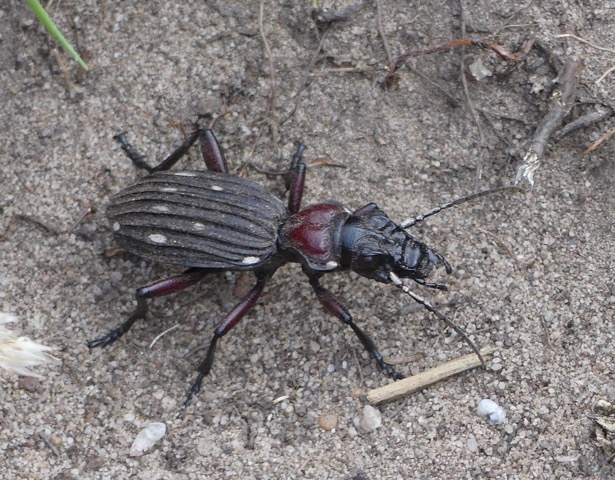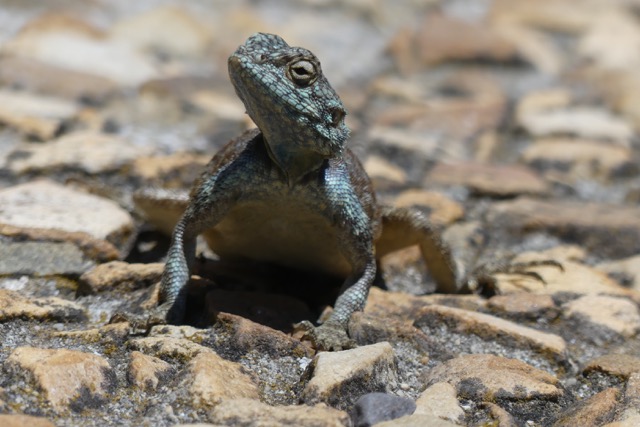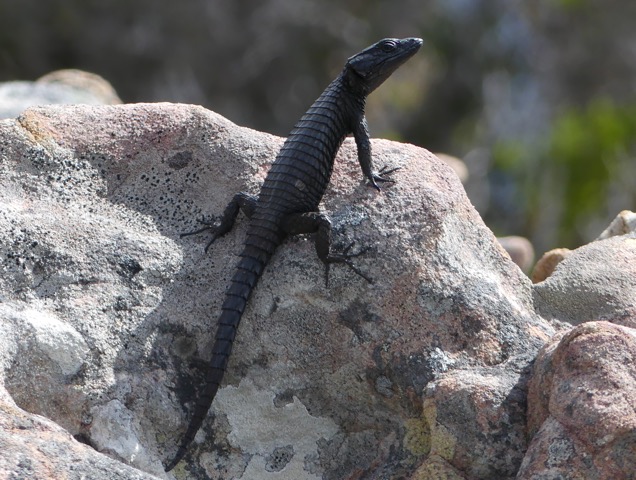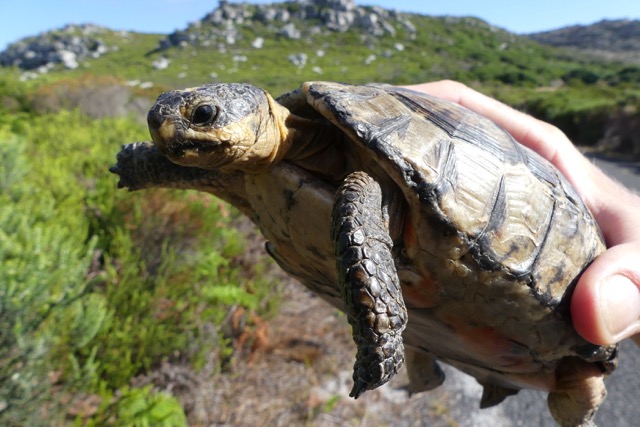Fynbos animals

VulcanSpirit
Richard & Alison Brunstrom
Mon 11 Jan 2016 17:11
| The fynbos (pronounced fainboss) is not only home to thousands of plant species, but also a fair range of animals. Almost all the big ones have gone now, hunted to local or total extinction, but a lot of interest remains, and the excellent SA National Parks Service is busy restoring habitats and slowly reintroducing appropriate species. Here are a few animals of interest that the VS crew found while wandering around in the fynbos: A twelve spot ground beetle, very closely related to similar species in the UK. These are quite large, very fast hunters racing around under the scrub (frustratingly for the photographer all cold blooded animals can move much faster under the African sun than animals in northern Europe):  There are two very common lizards, the southern rock agama and the black zonure. Both species’ males perch on rocks displaying to rivals and to females. The zones display is simply visual prominence, but the agama’s involves vigorous and comical head bobbing to show off his blue throat. Male southern rock agama Agama atra, on display rock, and then bobbing head:   Black zonure Cordylus niger showing characteristic ‘armoured’ appearance, and then on display from his vantage point:   South Africa has thirteen tortoises, four of which are found in the fynbos. Here is one, rescued as he crossed the road. This is an angulate tortoise Chersina angulata, and he can’t half run fast.  There are also a few large mammals. This is a bontebok Damaliscus pygargus, once one of the rarest animals in the world - reduced to a population of 17 individuals. Luckily SAN Parks stepped in, just in the nick of time, with a captive breeding programme. It has been a great success, and the species now numbers in the low thousands with a good future ahead of it. This one is now roaming in his natural habitat in the Cape National Park. Note that he’s grazing in the aftermath of a fire. It is natural fire that maintains the fynbos, and lovely juicy plants pop up all over the place soon after a fire passes.  And lastly a chacma baboon Papio ursinus . This is the Alpha male, the troop leader, keeping guard by the roadside. His troop numbers about thirty. Baboons have caused a lot of problems until recently, mainly initiated by people feeding them. They are clever enough to open a car door, or crawl in an open window, or snatch a bag. This feeding has now stopped, the baboons have resumed their normal behaviour and all is well. However the Park is crossed by several walking trails and the advice is to carry a big stick, a concept which the baboons are reputed to understand fully. Luckily we did not have to test this theory.  |